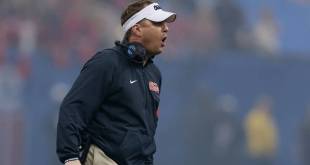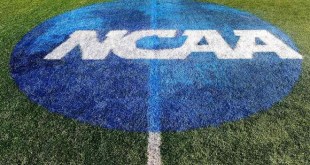Co-authored by: Justin Fielkow and Sean Dotson
On September 19, the North American Soccer League (NASL) filed an antitrust lawsuit against the United States Soccer Federation (USSF) after the governing body decided not to renew the league’s divisional sanction for 2018. Though it likely faces long odds, the long-awaited lawsuit could have a significant impact on the structure of soccer in the United States.
Background
The non-profit USSF is soccer’s official governing body in the United States. A member of the Fédération Internationale de Football Association (FIFA), the USSF, which was founded in 1913, governs amateur and professional soccer in the United States. As part of its regulatory role, the USSF has promulgated various tiered divisions, in which its member leagues and their clubs compete. A league’s tier designation is based on its ability to meet certain requirements or standards, including number of teams, geographic distribution of teams, market size of a team’s city, stadium capacity, as well as the minimum financial requirements for team owners. Major League Soccer (MLS) is the de facto top soccer league in America, and is the sole member league to be granted Division I status by the USSF. Other domestic leagues, such as the United Soccer League (USL — Division II), occupy other lower tiers in the divisional hierarchy.
Prior to the USSF’s implementation of a divisional structure in 1995, the original North American Soccer League – which has no ties to the current NASL – operated from 1968 to 1984 in the United States and Canada. The old NASL (like the current incarnation) had no salary cap and players were contracted by individual teams. The league’s popularity grew rapidly, peaking in the late 1970s when the league’s premier franchise, the New York Cosmos, signed global superstar Pele.
Without significant governance or safeguards in place, however, the old NASL suffered a rapid demise. Once the league started growing, new franchises were awarded quickly; yet, this over-expansion, without sufficient vetting of ownership groups, led to cash-strapped franchises folding en masse. NASL owners were also spending sums on player salaries that could not be covered by league revenue. The Cosmos, in particular, spent lavishly on star talent. The result was unchecked competitive imbalance, as most owners could not keep pace with New York’s level of spending and those that tried lost millions of dollars spending significant amounts on aging stars in an effort to match the Cosmos’ success. Potential investors balked, attendance began to decline, and the league ran a collective debt in 1980 of about $30 million, with each team losing money. In 1985 the league shuttered and died, the USSF was left with the dying embers of a fire, trying to figure out how to fan the flames.
Fast forward twelve years, and many of the decisions to run MLS in its current model stem from the desire to avoid the issues that led to the downfall of the original NASL. Instead of operating as an association of independently owned teams, MLS functions as a “single entity,” in which MLS owns all teams in the league but contracts with operator-investors (more frequently referred to as team “owners”) who manage teams and are entitled to certain potential benefits from running the teams. The league imposes strict (and relatively low) salary cap limits. The closed system does not allow for quick expansion and limits overhead to avoid teams outspending their resources. Importantly, like most sports leagues in the United States and Canada but unlike most international soccer operations, MLS has a fixed membership and does not employ a promotion-relegation system.
With soccer’s popularity again on the rise, competition was inevitable. Accordingly, in 2009, the new NASL was formed, shortly followed by the inception of the USL in 2010. Both young leagues, since their formation, have been given a lower-division categorization compared to their professional counterpart, MLS, by the USSF.
NASL’s Antitrust Lawsuit
NASL’s Division II status has not sat well with the upstart league. For years NASL has publically decried its divisional designation, implying that if it was not promoted to Division I it intended to challenge its status under U.S. antitrust laws. Yet, the league has consistently failed to even meet USSF’s minimal requirements for Division II status, let alone Division I. For example, standards implemented by the USSF in 2014 require the NASL to field at least 12 clubs across three time zones in order to maintain its Division II sanction.[i] The league, however, currently fields only eight teams. The USSF granted the league provisional Division II status earlier this year, but on September 1, 2017 NASL was informed by the USSF that it would not be approved as a Division II league for 2018.[ii]
On September 19, NASL filed suit in the United States District Court for the Eastern District of New York against the USSF. The two-count complaint, filed by famed sports litigator Jeffrey Kessler, alleges that the USSF violated the Sherman Act, 15 U.S.C. §§ 1-2,[iii] by restraining competition in and monopolizing the market for professional soccer in the United States and Canada.
In its complaint, NASL claims that the USSF – along with its co-conspirators MLS, USL and Soccer United Marketing (SUM – MLS’s marketing arm) – has sought to insulate MLS and USL from competition with NASL by “arbitrarily” maintaining and applying its divisional criteria. For example, NASL states, “under the USSF’s divisional criteria, there are European clubs that have successfully operated for decades that would be considered ineligible for ‘Division I’ or even ‘Division II’ status due to arbitrary requirements like stadium capacity and market size.”
NASL argues that USSF has implemented divisional standards that are intended to make it impossible for NASL to compete in the professional soccer market in the U.S. and Canada. The governing body has allegedly shielded MLS, with which it does business through SUM, from competition with other professional soccer leagues in this country by sanctioning MLS as the sole Division I men’s professional soccer league in the U.S. and Canada. According to NASL, the USSF now seeks to bar NASL from even competing with the USL as a second-tier league by revoking NASL’s Division II status for the upcoming year. As such, NASL seeks a (i) preliminary injunction to maintain the status quo, preventing the USSF from stripping it of its Division II sanctioning as it moves forward into 2018, and (ii) a permanent injunction to eliminate USSF’s divisional structure, allowing leagues to operate without designations and without the Division I classification that, the NASL argues, gives MLS an unfair advantage.
Conspiracy and the Rule of Reason
In order to prevail, NASL will first need to present evidence of an agreement, scheme or conspiracy by and between USSF and its member bodies to suppress the NASL. NASL claims that there are “contracts, combinations and conspiracies led by USSF and its independent members, including MLS and USL, to apply its anticompetitive Professional League Standards to … protect the MLS monopoly.” In other words, the USSF’s divisional standards, according to NASL, supposedly reflect an ongoing conspiracy between USSF and MLS to exclude NASL from Division I. Generally under antitrust law, such conspiratorial agreements need not be embodied in express or formal contractual statements. Rather, some form of mutual understanding that the parties will combine their efforts for a common, unlawful purpose may be sufficient.
NASL may nevertheless have some difficulty proving that USSF and MLS conspired with the intent to harm NASL when SUM was founded in 2002 and USSF’s divisional standards were initially promulgated in 1995 – some 15 years before NASL’s formation in 2009. Moreover, NASL had a role in crafting the current standards, and in any event, when considering proposed changes to those standards, all USSF board members with existing relationships with a professional soccer league abstain from voting such proposals in an effort to avoid potential conflicts of interest.
Further, under antitrust law’s “Rule of Reason,” a court undertakes an extensive evidentiary study of (1) whether the practice in question in fact is likely to have a significant anticompetitive effect in a relevant market and (2) whether there are any procompetitive justifications relating to the restraint.
To the first part of the analysis, NASL must prove that competition has actually been restrained in the relevant market. The league will likely argue that the relevant market is limited to men’s professional soccer within the U.S. and Canada. In doing so, it will claim that there are significant differences between being classified as a Division I, II or III league – namely, financial benefits such as higher-value sponsorship opportunities and more potential for association with the US national team.[iv] The narrower the market, the more likely it is that NASL can show that USSF’s divisional criteria has had an anticompetitive effect on the market. On the flip side, the USSF will likely argue that the relevant market is much broader – e.g., including any sports or entertainment activities, such as attending an NFL or MLB game, on which potential consumers of NASL or MLS games spend their money. If the relevant market is larger, it is more likely that USSF’s divisional standards do not have a significant impact on competition.
Under the second part of the Rule of Reason analysis, a practice is lawful if any anticompetitive harm is outweighed by its procompetitive effects. NASL must therefore show that the USSF’s divisional standards do not serve legitimate procompetitive goals. This will again likely present a difficult hurdle for NASL.
NASL’s lawsuit attacks the basic structure of modern U.S. soccer. It argues that USSF, though its divisional standards, has created an artificial hierarchy of closed divisions, in which clubs do not migrate up or down divisions through a system of promotion and relegation. NASL contrasts USSF’s framework with the classification of professional soccer leagues by FIFA federations outside of the U.S., and condemns the domestic system as an anticompetitive, closed model.
Yet, most of the leagues abroad are typically unified pyramid structures in which promotion-relegation occurs by agreement. Here, leagues such as MLS and NASL are separate competing entities. Further, even foreign leagues and clubs are subjected to standards similar to the USSF’s divisional standards. For example, clubs in the English Championship and Premier League are required to have certain sized stadiums, and coaches are required to have UEFA Pro licenses. The vast majority of the top leagues around the world feature at least 16 teams.[v]
More importantly, many of the global leagues exist in areas of the world that have historically supported soccer. Professional soccer in the United States, however, has been fraught with volatility and upheaval. The failure of the initial incarnation of the NASL in the 1970s and ‘80s is a testament to the tenuous footing on which domestic soccer has historically stood. The USSF’s delegated task from FIFA is to grow and nurture the sport in the country. The governing body will therefore likely argue that its divisional standards are essential to ensuring that American soccer fans receive a reliable, quality product.
Further, under antitrust law, where restraints are necessary for a product to exist, courts have typically permitted such restrictions where they serve a net procompetitive function – particularly in the context of sports.[vi] In the absence of rules that limit competition, it may be difficult, if not impossible, to organize men’s pro soccer in economically beneficial ways. For example, prior to sinking critical capital into a club or league, investors may want certain rules and uniform standards imposed that ensure market stability, which may only be feasible in an insulated, tightly regulated system. If the USSF’s standards are eliminated, the instability that led earlier domestic leagues to fail may return.
Conclusion
The NASL has been a mess almost ever since it was resuscitated in 2011. Out of the NASL’s last five expansion teams, four have struggled mightily, changed owners, or gone out of business entirely. Numerous NASL teams have defected to the USL, and NASL’s most recent expansion team, the San Francisco Deltas, has become somewhat of a running joke with the owner pleading for fans to bring friends to the matches. Unless something drastically changes in the way it operates, the league, in all likelihood, is making its last stand.
Yet, NASL’s ultimate survival as a league pales in comparison to the potential far-reaching consequences of the lawsuit. If a court establishes that the USSF has no legal authority to designate tiers, there is nothing stopping some other, better-organized group to create a real challenge to MLS. It could also lead to a compromise of sorts, in which the United States embraces a domestic system of merit-based promotion-relegation. Heck, it’s exceedingly unlikely but it’s even possible that potential holdings in this case could have an impact on the closed-system model of other sports leagues in America.
Antitrust law is complex and violations are often difficult to prove. Expert witnesses compile extensive reports and economic studies are frequently commissioned. Accordingly, such lawsuits tend to take considerable time to be resolved. Nevertheless, NASL has already filed a motion for preliminary injunction, which the court is set to hear soon. If NASL is granted the injunction, it theoretically would maintain its Division II status next year. However, the league has made it crystal clear that its long-term goals are much more ambitious.
[i] The Division I standards are even more onerous, requiring a minimum of 16 teams in the league, 75% of teams being in urban areas with a population of at least two million, and all stadiums to have a capacity of at least 15,000.
[ii] The USSF had given the NASL numerous waivers over the years, and even after the NASL lost four teams following the 2016 season, the USSF granted the NASL provisional Division II status in early 2017, provided it met certain conditions. Those conditions apparently have not been met to the satisfaction of the USSF.
[iii] Section 1 of the Sherman Act makes it illegal for competing businesses and other entities to conspire in ways that unreasonably harm economic competition. Section 2 prohibits an entity from intentionally acting as an unlawful monopoly in a relevant market.
[iv] In an effort to sell soccer in the United States, MLS’s marketing and media rights have also been bundled with those of the US National Team, which has helped to expand the MLS footprint and further increasing the value of the sole Division I league.
[v] Many, if not most, of the top global leagues would have no trouble complying with most of the USSF’s domestic standards. One exception, however, is that almost no foreign league satisfies the USSF requirement that, in order to qualify for Division I status, at least 75 percent of league’s teams must be located in cities with a population of at least two million people. The NASL will likely point to this USSF standard as one with arguably no procompetitive benefit. Nevertheless, the Rule of Reason does not require that every imposed restriction have a net procompetitive benefit. Rather, antitrust law looks to whether the overall, procompetitive effect of the restraints, taken as a whole, outweigh anticompetitive harm. There are likely salient reasons behind this population requirement – e.g., to ensure that a league enters a majority of markets in which the population base is robust enough that the club has a strong chance to survive – but even if this restriction is deemed to be anticompetitive, it probably would not have a significant impact on the net, likely procompetitive effect of the divisional standards.
[vi] See, e.g., National Collegiate Athletic Association v. Board of Regents of the University of Oklahoma, 468 US 85 (1984); see also Broadcast Music, Inc. v. Columbia Broadcasting System, Inc., 441 U.S. 1 (1979).
 The Sports Esquires Putting Sports on Trial
The Sports Esquires Putting Sports on Trial





